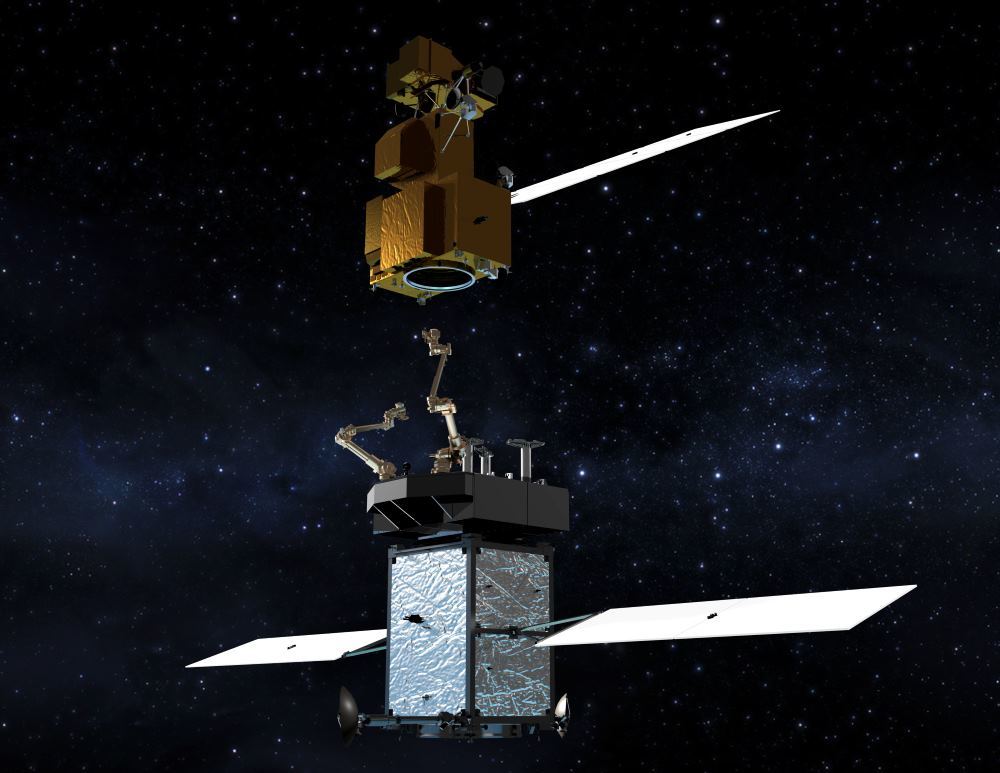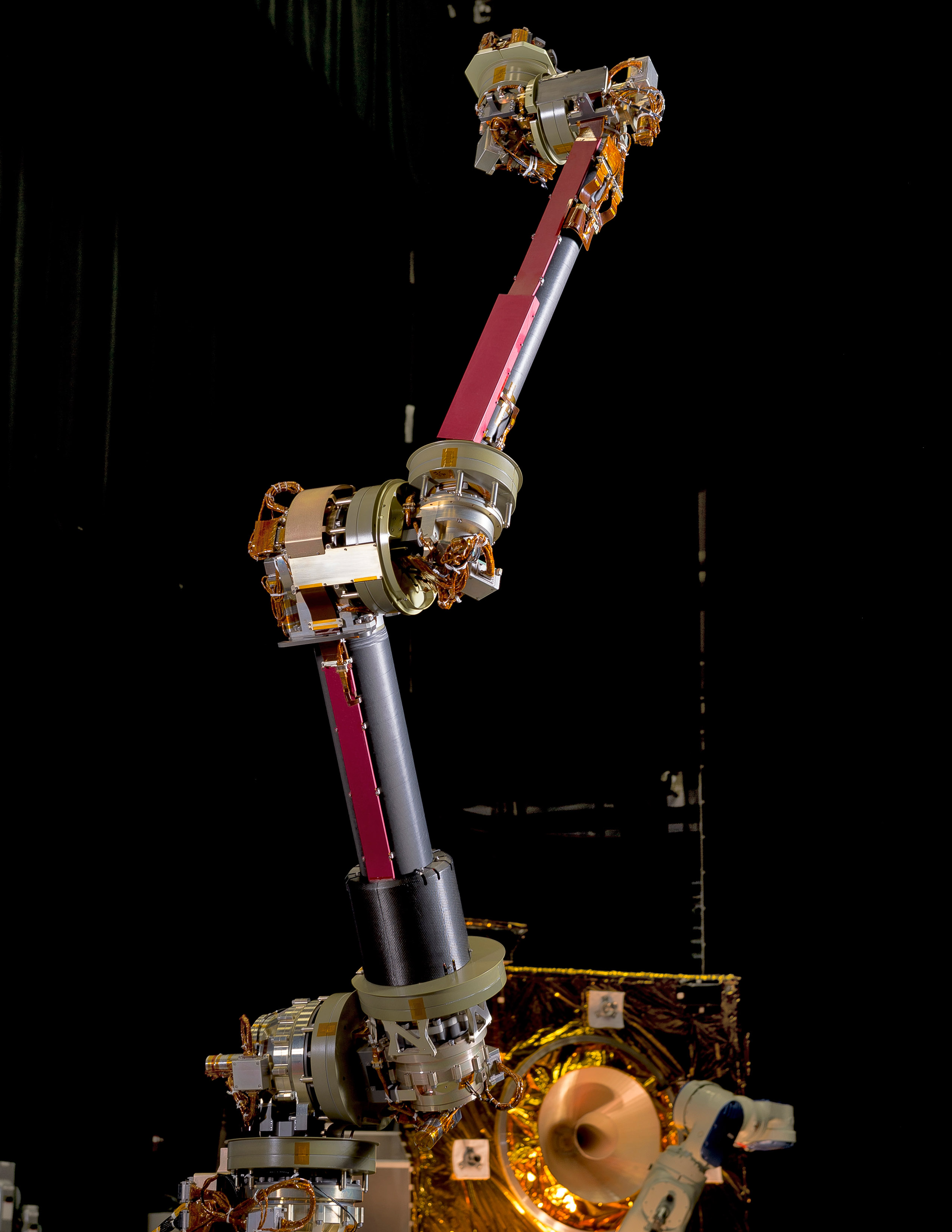NASA is developing a satellite to refuel and maintain other satellites

This is how a meeting of a satellite that needs fuel or technical inspection and a service unit can look like in space.
New technologies and methods of their use are gradually bringing the recently seemed so distant future. The study of the solar system, many of its planets, satellites and other objects is no longer a fantasy, but today. In order for spacecraft exploring the solar system to work over the long term, NASA experts suggested an interesting idea: an automatic satellite that can provide service support to other satellites.
So far we are talking only about refueling spacecraft with a further expansion of the functionality of the “tanker”. Many such devices, which have developed fuel, have no choice but to hang in outer space without a special purpose and need, littering the near-earth orbit. The mission of the Cassini probe, for example, has to be completed precisely because of a shortage of fuel - the satellite will soon enter the upper atmosphere of Saturn. But over time, things can change: now NASA is working on the Restore-L mission .
The goal of the mission, as already mentioned, is the development of an automatic device capable of refueling other satellites on the move. After the readiness of the refueling satellite, it will be tested in work in a low orbit. The first refueling candidate is the US government satellite Landsat 7 .
')
But before working as a tanker, Restore-L will perform several more tasks necessary for the successful implementation of the upcoming NASA missions. One of them is man’s study of Mars.
Restore-L is a high-tech device, which includes, for example, an autonomous navigation system of the latest development. In addition, there is a multifunctional manipulator and related software. This entire set is complemented by tools that allow you to refuel other satellites. To maintain the fuel in a suitable condition for use, the satellite is equipped with an automatic monitoring system.
In the future, scientists will try to carry out a number of projects using Restore-L. For example, the production and assembly in orbit of special fuel storages, the maintenance of orbital observatories, the observation and management of space debris. Some of the technologies used to create the device will work during NASA’s planned mission to transport the asteroid to the moon. This mission is called the Asteroid Redirect Mission .

Satellite robotic arm
The automated system being developed for Asteroid Redirect Mission will contain many electronic components and systems that are planned to be placed in Restore-L. First of all, we are talking about avionics, autonomous navigation system, a number of program elements and other systems. In addition, this mission provides the possibility of refueling the main device of the “asteroid probe” during the flight. The new Wide-Field Infrared Survey Telescope Observatory (WFIRST) will also be refueled using Restore-L.
Many technologies created by NASA engineers now will be driven around first to Restore-L, and then transferred to other devices. If all goes well, the study of outer space will go even faster.
“Restore-L should rid us of the satellite-at-a-time paradigm,” says Frank Zepollina, one of the members of the Hubble telescope service project team. Now Tsepollina uses the experience gained earlier to accomplish the Restore-L mission. He believes that the new satellite allows using the robot to monitor, update and refuel expensive orbiters. As a result, space missions will become less expensive and more effective.
Refueling can be carried out not only for spacecraft that are engaged in space exploration. Operators of commercial satellites will also be able to extend their lifespan by refueling and service directly in space. Companies will be able to launch satellites with a minimum set of fuel to ease the launch vehicle and reduce the cost of launch. And after such a system goes into orbit, it will be filled with Restore-L fuel or another similar device (if the device shows its effectiveness, NASA may consider launching other similar probes).
Some companies have already expressed interest in testing the new system and related technologies. Restore-L allows you to talk about a significant extension of the work of spacecraft. But, as already mentioned, we are not only talking about the refueling of satellites, an important element is the test “in the field conditions” of new technologies.
Source: https://habr.com/ru/post/399729/
All Articles